It has been a good year for developing my wildlife photography. In March, I went mirrorless and haven’t looked back – with the lighter setup and silent shutter of the OM1 helping me to capture images and video footage I would have struggled to get with my Nikon D500. My weekday walks have allowed me to get close to local wildlife while our wanders farther afield have thrown up some exciting encounters.
However, 2023 hasn’t been without its photography problems. Many of the deer I spent so much time building relationships with last year have moved away (or passed away) since, and the prolonged spells of ridiculously wet and windy weather this year were restrictive at times. I also witnessed nest failures and other setbacks for our wildlife – nature had its problems too.
Reflecting on a year of photographing nature isn’t easy – it is hard to take a step back when emotions are attached to each encounter with wildlife. In this blog about my 2023 activities, I’ve summed up some of the marvellous moments captured and noted what I learned.
Seabird summer
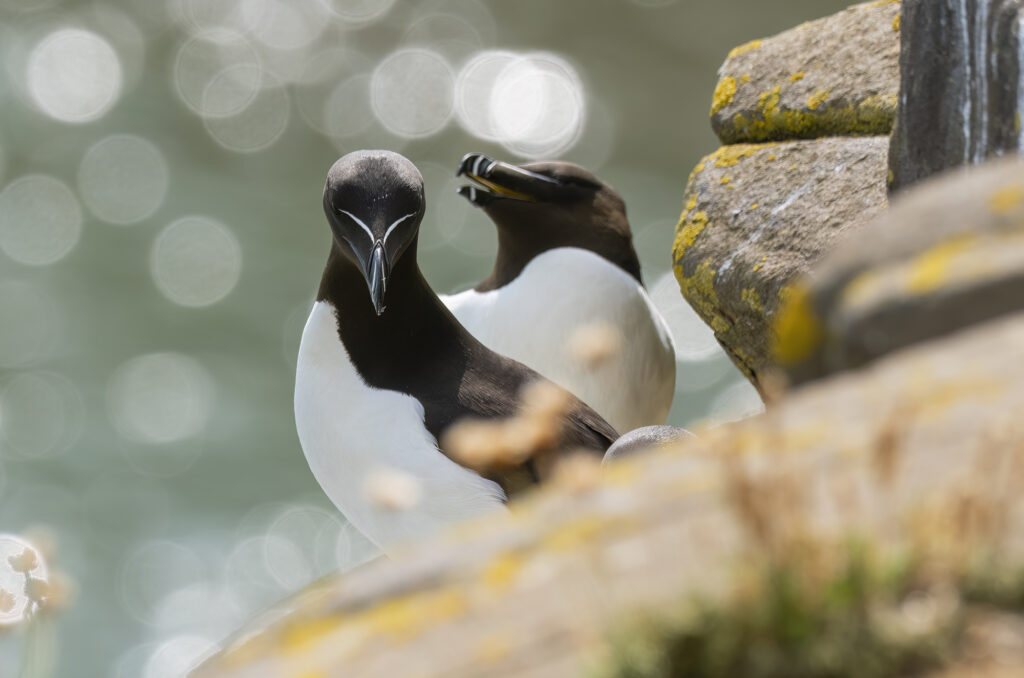
The amount of activity concentrated in a seabird colony can be overwhelming (as is the smell), but they are one of my favourite locations, with plenty of action to photograph. This year, I visited three: the RSPB’s Fowlsheugh and nearby Arbroath Cliffs – which includes the Scottish Wildlife Trust’s Seaton Cliffs Nature Reserve – followed by Cullernose Point on the Northumberland coast path.
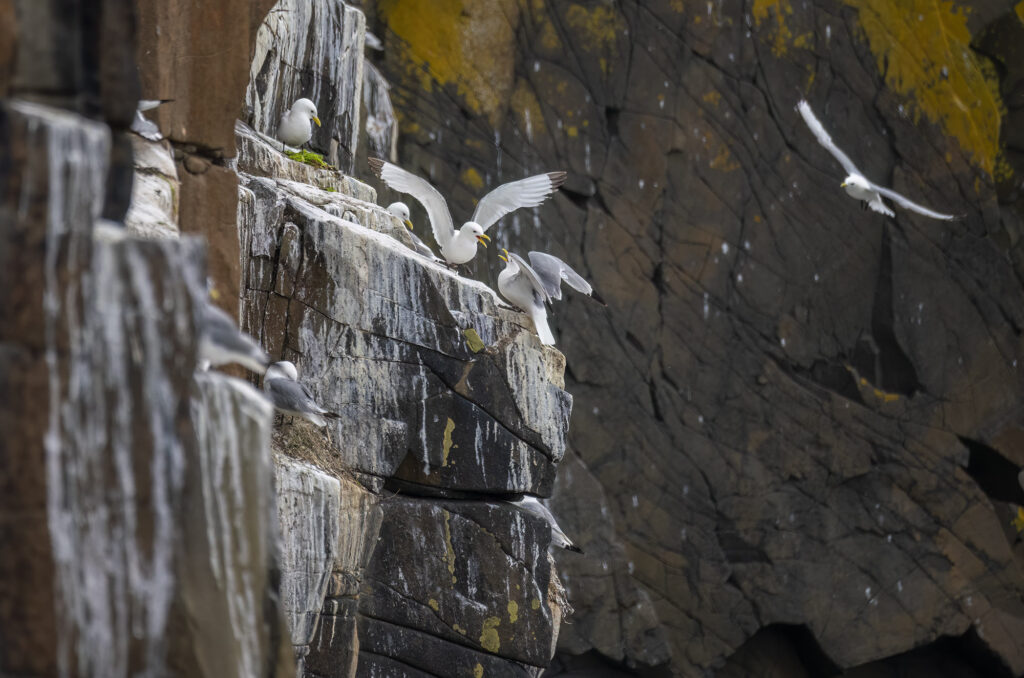
With seemingly unending opportunities for photographing the seabirds on the cliffs, it can be hard to know where to point your lens next. My advice is to avoid a scattergun approach at these colonies and have a plan for the different types of images you want to capture. For example, focusing on isolated birds is the best way to get uncluttered portraits and details, such as plumage. Spots where birds are crammed together are perfect for capturing the hustle and bustle of the colony.
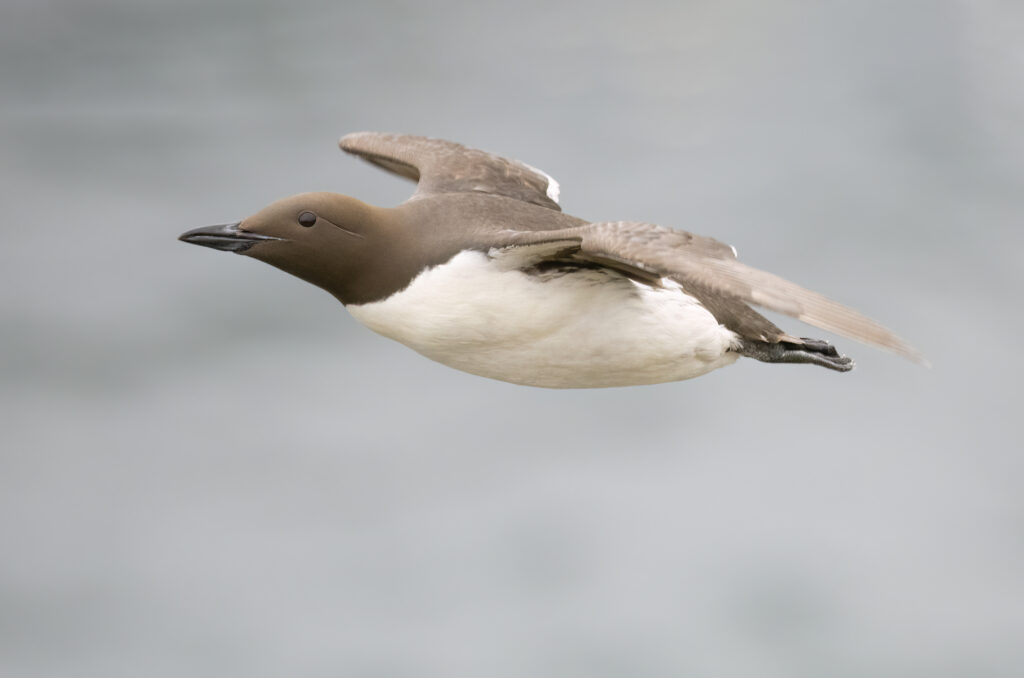
Capturing seabirds in flight can be tricky. Did you know that razorbills and guillemots can reach almost 50 miles per hour? It is, therefore, worth putting in the time to try and nail images of the birds zooming in and out of the cliffs, as any success is truly satisfying. Photographing peaceful scenes, such as pairs tucked up together, makes a nice contrast to the action, and it’s worth keeping your eyes peeled for these opportunities.
Breeding bonanza
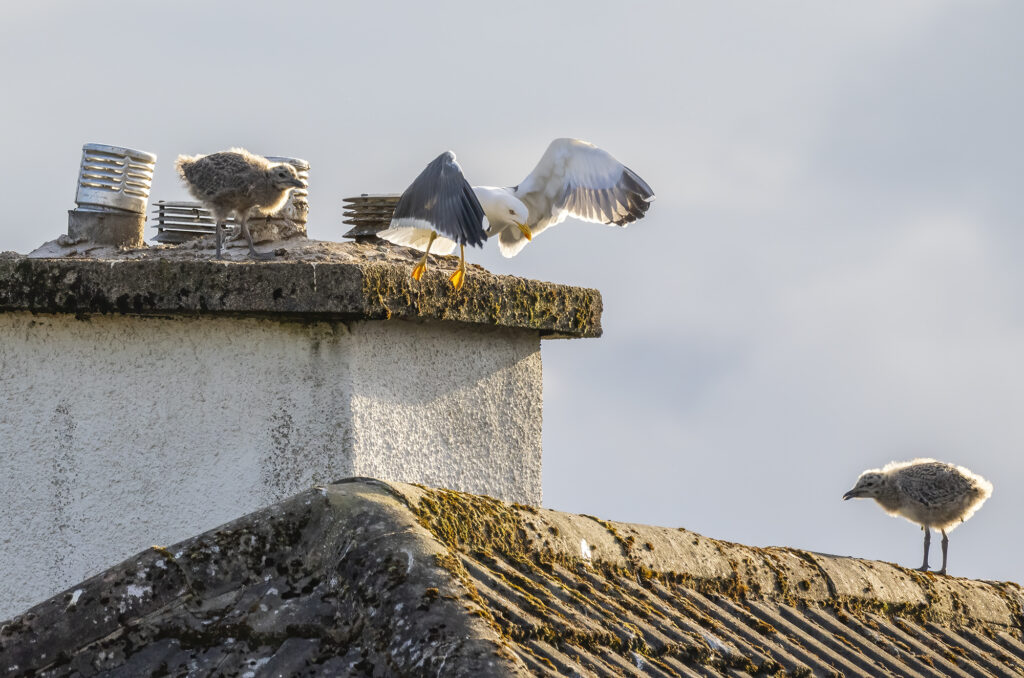
I was lucky to witness nearly all stages of the bird breeding cycle this year. While I nervously watched lesser black-backed gull chicks being raised on a chimney a few houses away from ours for weeks, I sadly wasn’t around to see if they made it off the roof and away to safety.
I did, however, get to photograph what my partner identified as “a black and white bird eating a Brillo pad” – AKA mating red-breasted mergansers. As the male splashed about on the surface, I realised that what he was holding onto with his distinctive sawbill wasn’t a fish or a Brillo pad. He had hold of the neck of the female, and they were busy creating the next generation. It just goes to show that keeping your lens pointed on a subject that appears inactive at first glance, can mean you witness some unusual behaviours.
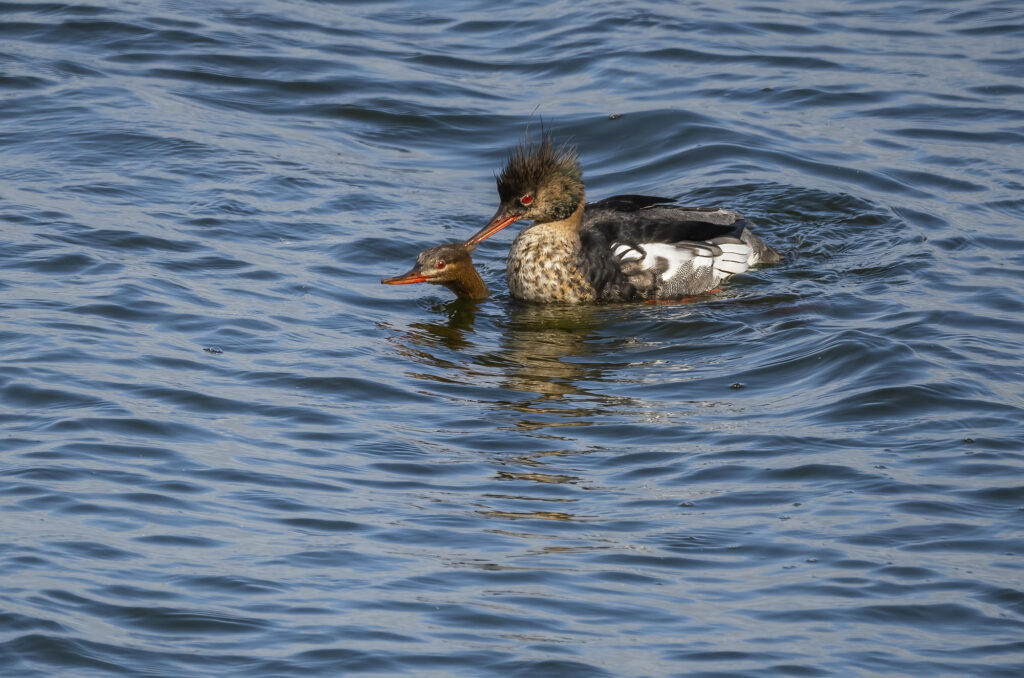
I didn’t expect to get the opportunity to photograph a skylark, let alone one carrying food to its nest. The confiding individual in the image below let me get incredibly close. I took my time approaching it – stopping to capture a couple of images before moving towards it again and repeating the process. The path was taking us right past where it was perched, but I was determined not to alarm this individual. The result? It calmly walked off into the heather behind a rock – presumably to take its beakful of food to a nest of hungry chicks. This species nests on the ground, laying three to four eggs. The chicks become independent after only two weeks, and parents can have up to four broods in a breeding season – a good strategy when your chicks are so vulnerable to predation.
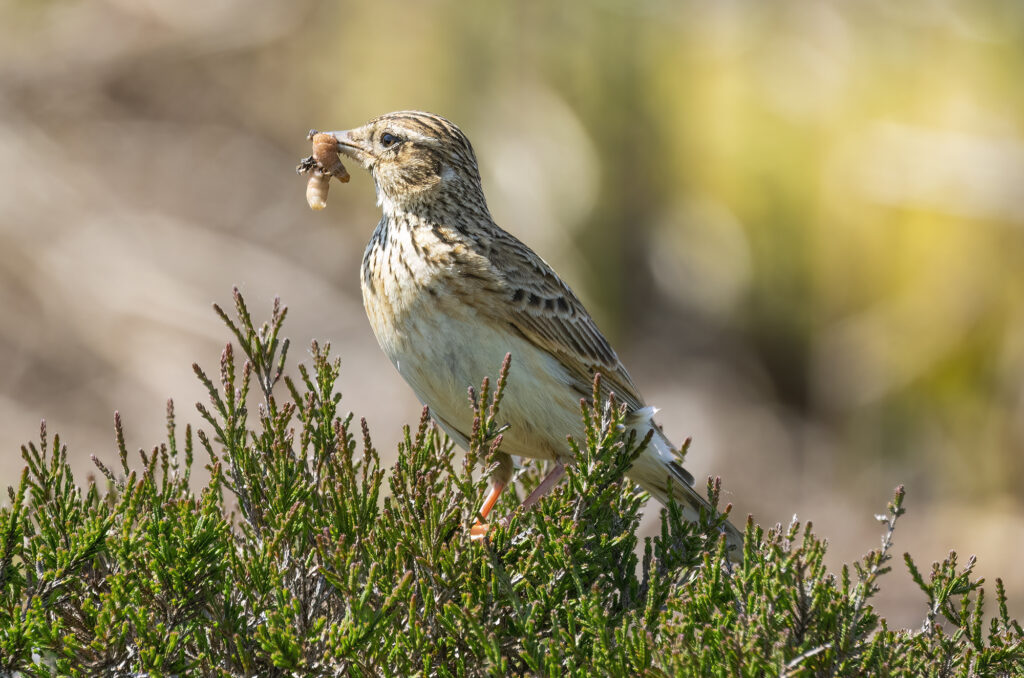
This encounter and the images I captured mean even more to me since my father’s funeral in October. We played The Lark Ascending by Vaughan Williams at his cremation – a beautiful piece of music that I now can’t hear without picturing its beautiful subject.
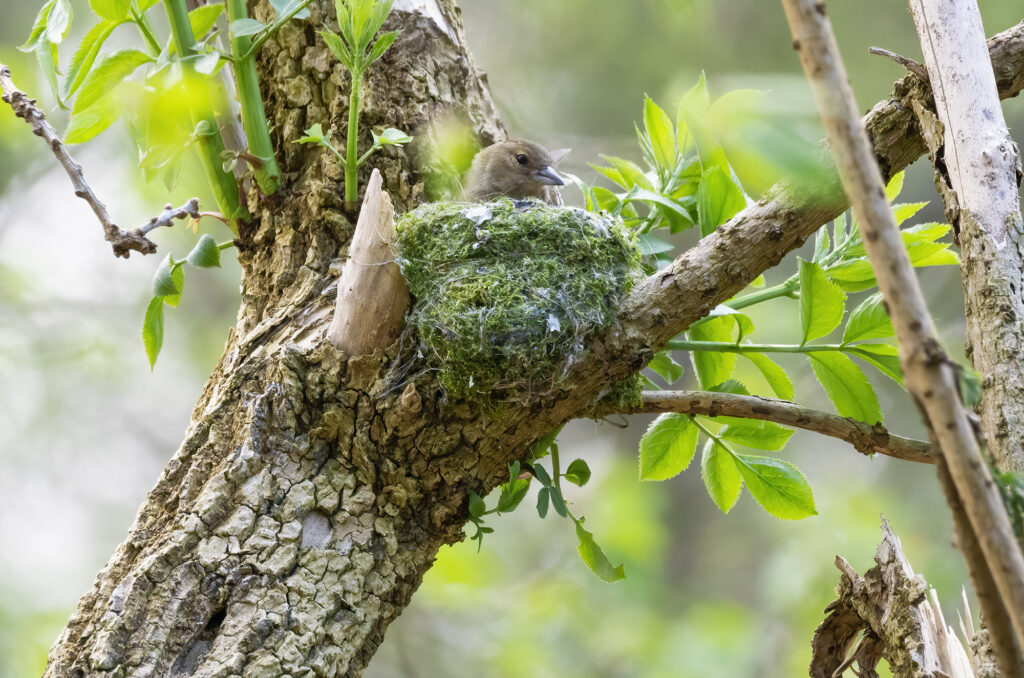
Sadly, it wasn’t all about success in spring. I was overjoyed to discover a chaffinch nest on my local patch, but a sinking feeling quickly replaced my excitement when I realised that the nest was in an exposed spot with a storm on the way. When I returned after the weekend, the sinking feeling remained as I crunched through the woods towards that battered tree. I raised my lens to take a look from a distance and found an empty fork in the branches where the nest had been. I hoped the female chaffinch had moved the nest, as this species will do this if their chosen location is deemed unsatisfactory. As I moved closer, the tattered shreds of moss hanging from the other side of the tree wavered in the lightest breeze. The nest was gone – returned to bits of moss, webs and hair.
Surprising subjects
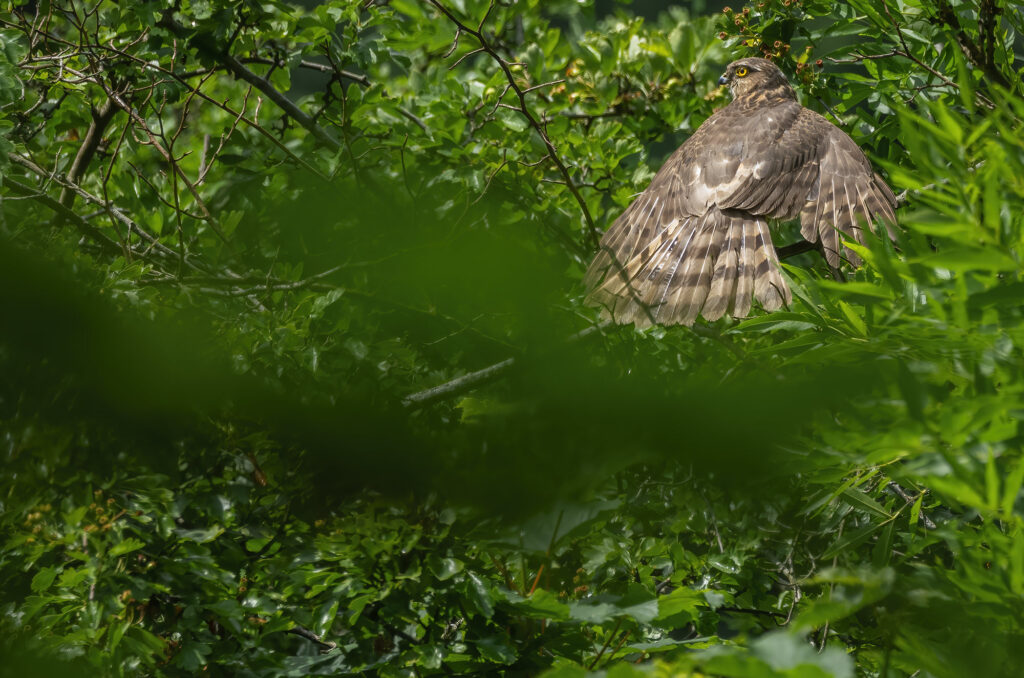
When it comes to wildlife photography, I always expect the unexpected. I have learned this lesson the hard way – all those missed opportunities where I didn’t bother taking the camera with me and all those times where I didn’t properly check out that rustle in the undergrowth.
Thankfully, back in June, I did double-check the flapping in the trees overhead. I was positive it was a wood pigeon moving about after a heavy rain shower, but wanted to be sure. When I looked up into the canopy just in time to see the bird take off, I noticed it looked too brown to be a pigeon. Luckily for me, it didn’t fly far, landing in a tree on the other side of the river. It spread out its wings to dry off, and we could see it clearly through the greenery for the first time – a juvenile sparrowhawk.
The weather had been showery all morning, and this individual was obviously keen to take advantage of the sun coming out to dry off its feathers. Standing in a concealed position on a path on the opposite side of the river, we were treated to it preening and posing for many minutes as the air warmed up. All this took place next to the river running adjacent to the road into our nearby country park – it was local patch photography at its best.
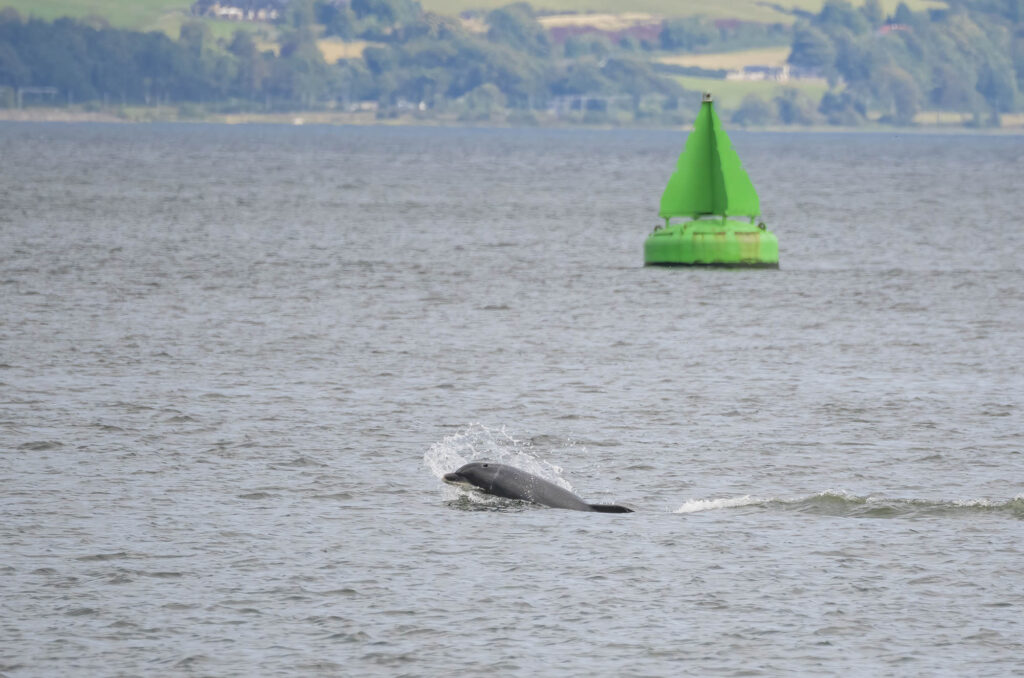
That wasn’t the only surprising encounter of 2023. Thanks to the Clyde Cetacean Sightings Facebook group, we managed to be in the right place at the right time to witness a pod of bottlenose dolphins hunting in the Firth of Clyde. I hadn’t photographed dolphins like this before. My previous experience was of distant shots of pods swimming in a straight line, shadowing the coast – predictable in their movements and travelling at a steady pace. The movements of the Clyde dolphins were fast and unpredictable (to me, anyway).
After capturing some images and with no time to check what I’d got, I switched to recording video. Getting footage would have been pretty impossible using my Nikon D500 with the long lens attached and without a tripod, but using the OM1 handheld for video is much easier. I used the rail on the ramp for stability and tried to predict the dolphins’ movements as best I could.
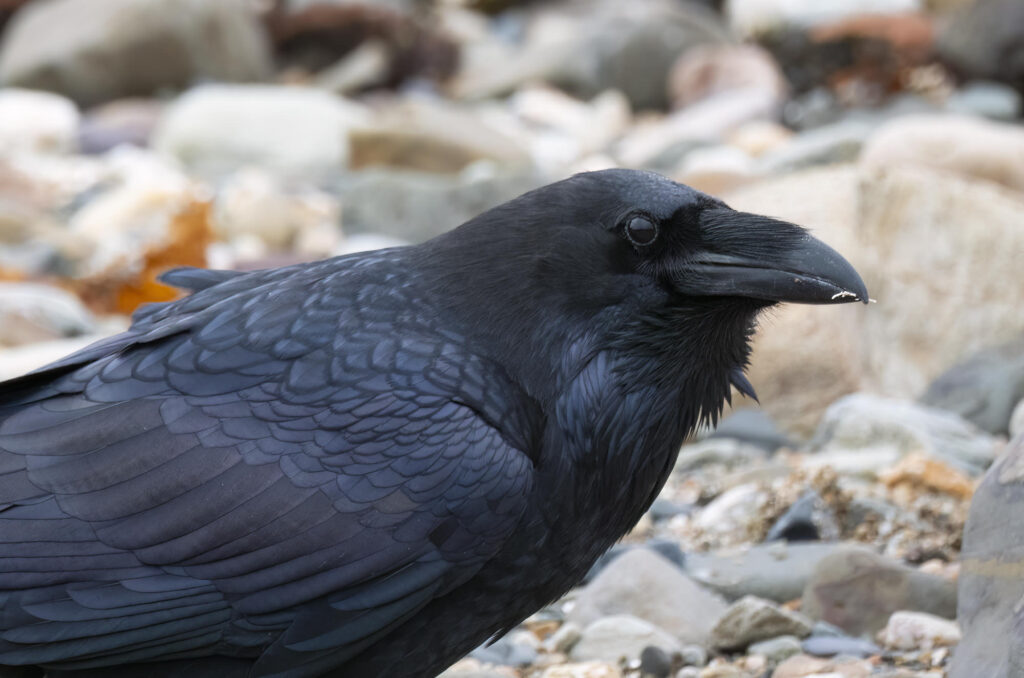
Although it is not unusual to see ravens on our walks at Lunderston Bay, they are usually in flight and at a distance. However, on a walk back in August, we saw two huge corvids bouncing along the shore. I swore they couldn’t be ravens – despite what my eyes (and my partner!) were telling me. They were too close to the path, too close to people. They had to be carrion crows. I therefore didn’t pick up my camera straight away. It was the confident “kronk” from one of the pair – just before it flew off – that left me scrambling to capture an image of the remaining raven. I still can’t believe they had allowed us to get so close before they disappeared. In my experience, they seem to stay as far away from humans as possible.
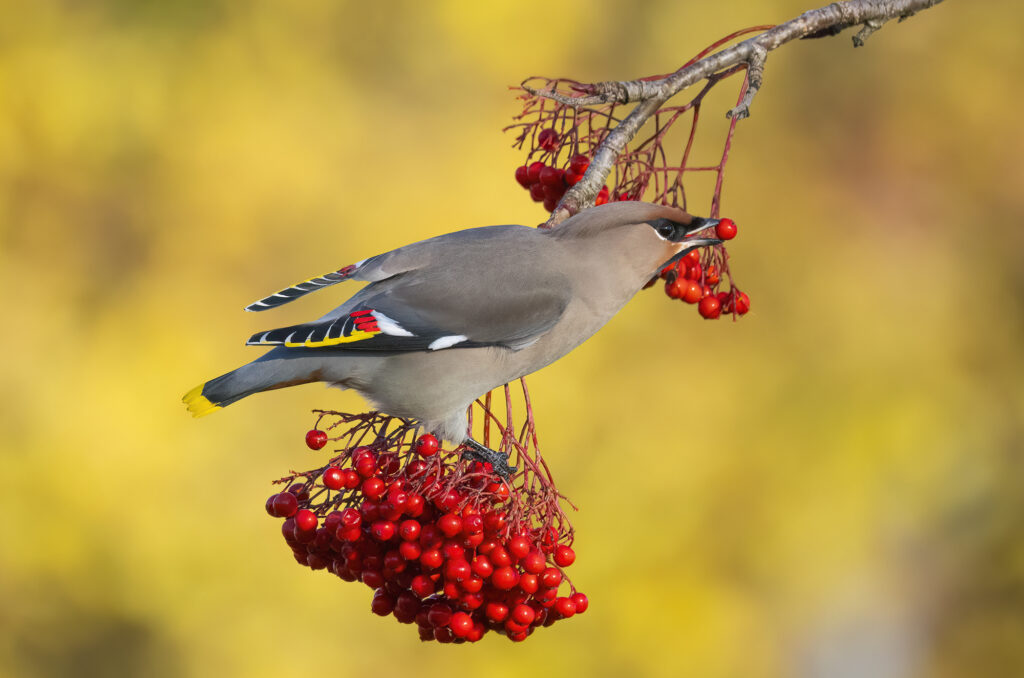
It wasn’t just the summer months that brought unexpected encounters either. Despite numerous sightings of large flocks of waxwings locally, I was still shocked to find around 100 waxwings exactly where the @Clydebirding X account said they would be. Fate often dictates that the sighted wildlife has left the area by the time I arrive. Thankfully, that wasn’t the case this time.
Macro marvels and mysteries
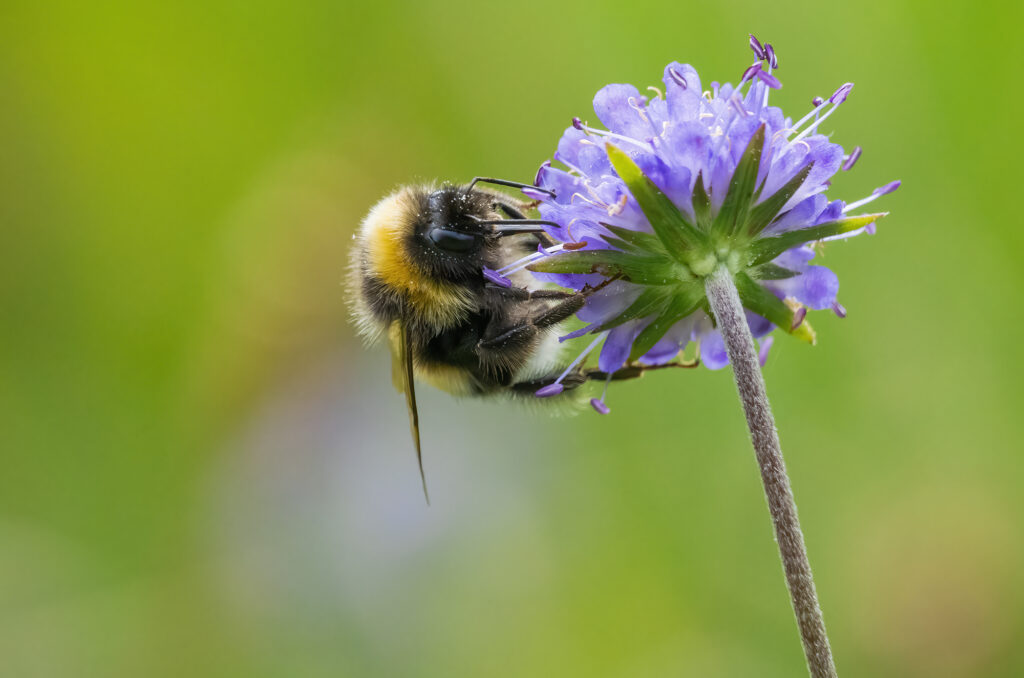
Although I don’t shoot using a macro lens, I always enjoy capturing images of invertebrates. Using my long lens (100-400mm) on the OM1 enables me to stand a distance away to capture these images, so I avoid disturbing any diminutive subjects. Although this setup doesn’t provide the detail and magnification of a macro lens, it makes it easier to take advantage of invertebrate photography opportunities. It also allows me to switch to photographing a passing bird without needing to change lenses.
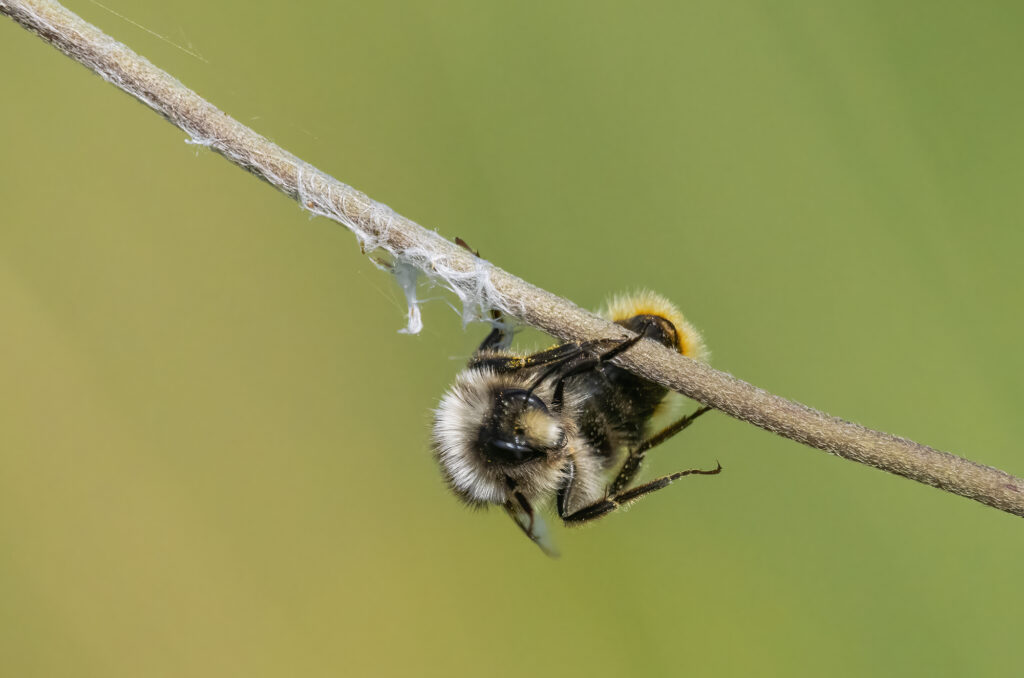
I also love the variety of invertebrate subjects and the challenges of identifying them. I struggled to identify the little bee shown above, even after looking at every identification chart I could find. Asking for help from the Bumblebee Conservation Trust on social media gave me an answer – they responded that this was a male red-tailed bumblebee. I was surprised, as none of the images looked like the photos online. I then realised that I was relying too much on the colours of the bee. Males usually have yellow facial hair and bright yellow bands at the front and rear of the thorax, along with a similar red tail to females. However, this colour fades quickly in sunlight and can appear yellow – or even white – in worn individuals, like this little guy.
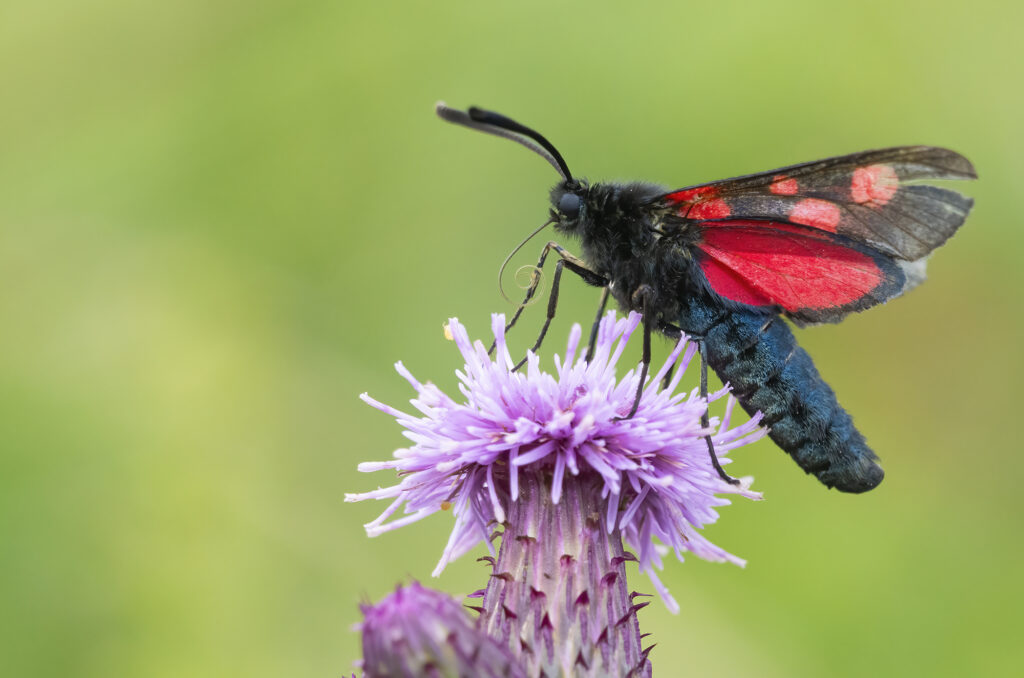
I also had to look up the five-spot burnet moths I photographed in Northumberland, as I had never seen one before. As well as making them a bright and bold subject to photograph, the red spots of burnet moths have an important purpose – warning potential attackers that they are poisonous. These moths can release the chemical compound hydrogen cyanide, which gives them a bad taste and, in large quantities, can kill a predator. The sun came out after a heavy rain shower, and these day-flying moths were everywhere, soaking up the rays.
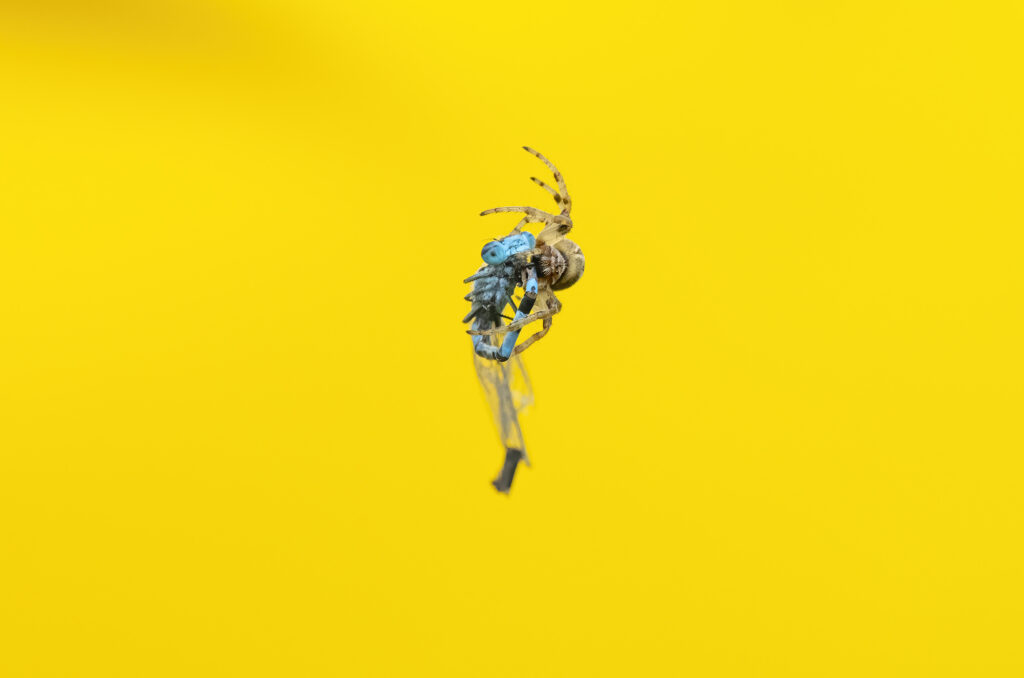
A more dramatic encounter happened in July when my partner picked up a dead damselfly hanging from a branch. He failed to anticipate the angry orb weaver spider rushing down the thread out of nowhere to grab its prey back from him! It all happened quickly, so I was happy to capture a couple of images of the angry arachnid with its ex-damsel-in-distress. The yellow background came from my partner’s t-shirt as he had moved away to let me take the photos.
Local loves
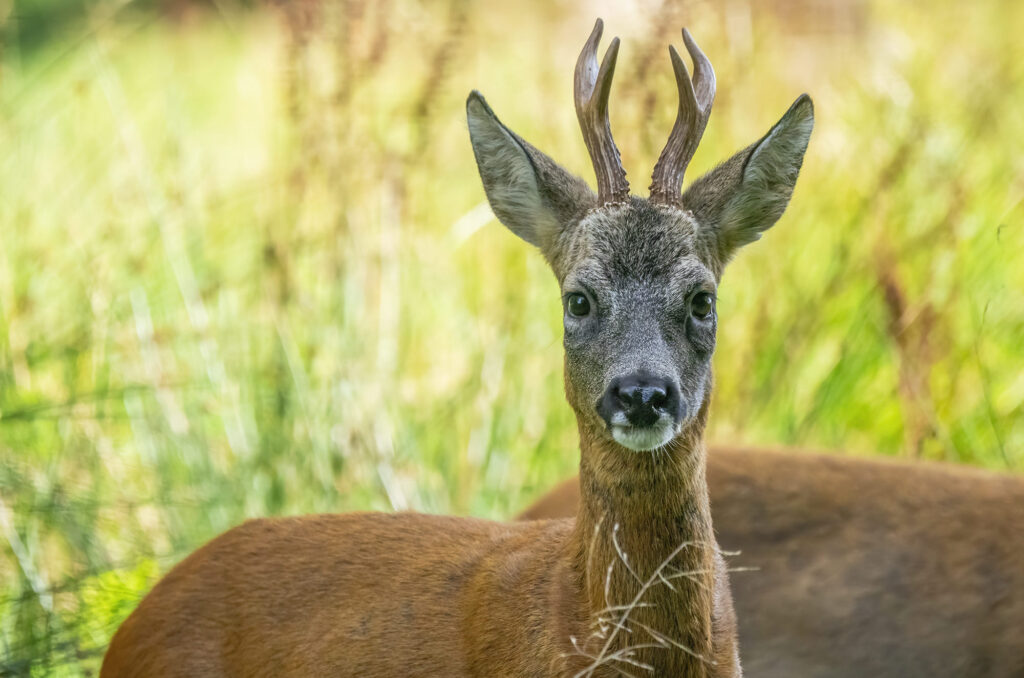
If you follow me on social media, you will hear me wax lyrical about the wildlife I photograph on my local patch. 2023 was another bumper year, although much has changed – particularly with the roe deer.
All the older individuals have disappeared off my local patch. The loss of Blue (the matriarch) and Quint (the big buck) has been tough, as I had built strong relationships with them. These relationships, in turn, convinced the other deer in the area to tolerate me. The three young deer I now see and photograph regularly on my patch probably know me – I hope to identify them as youngsters I started following last year as babies – but I am still trying to confirm who they are. Either way, they are much more nervous than the older individuals were, and I continue to work hard to prove they can trust me.
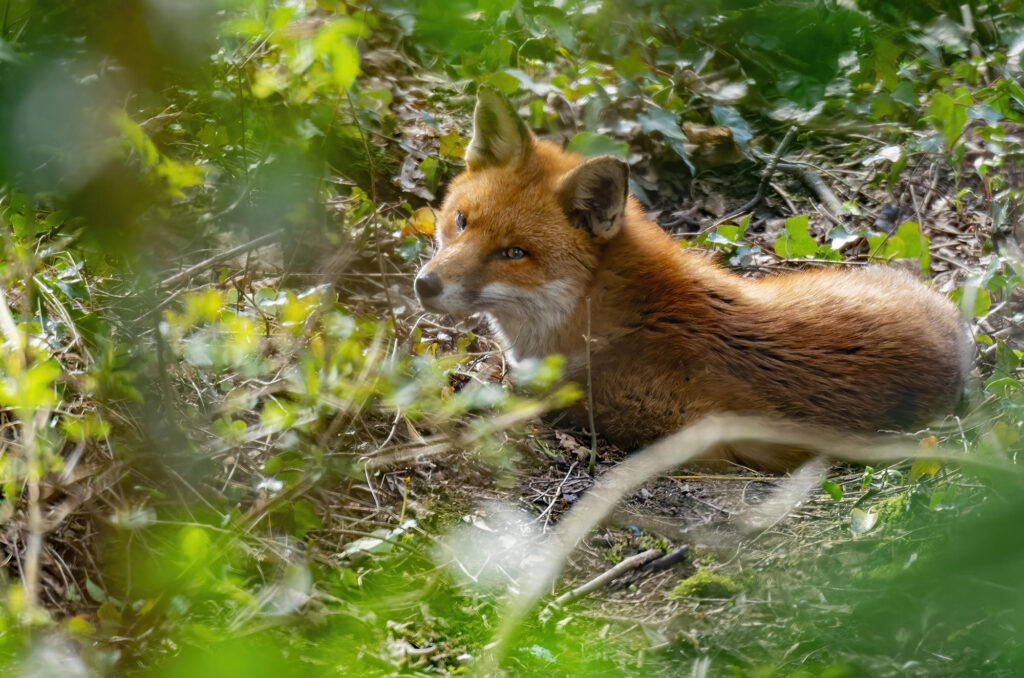
Time spent with the deer has led to less time with the foxes on the local burn. So, when I’ve had the time to stroll past their territory, taking it slowly and remaining vigilant has been the key. Trees line the banks of the burn, and the grass is long in the meadows beyond. It is a cluttered view, and it is easy to march right past a snoozing fox. The rust colour of their coat can help when the grass is literally greener – looking for an orange patch in a sea of green is a good start. But just slowing my walk as I passed the banks of the burn provided four close-up encounters with sunbathing individuals earlier this year.
Harnessing hope
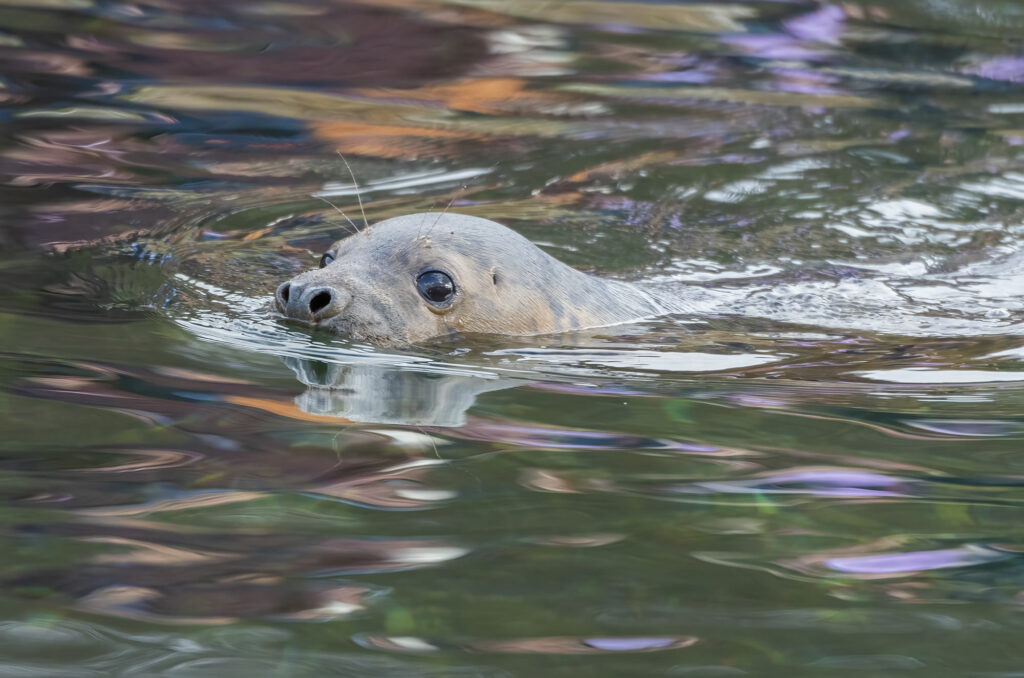
With the news full of quite frankly scary headlines about the future of nature, not just in the UK but worldwide, there are days when I have felt overwhelmed by anger. However, there are times when the actions of others have given me hope and, back in February, we got to witness one of these good deeds first-hand. On a calm and quiet Saturday afternoon at Portencross Harbour, we watched two young grey seals swim to freedom after having been rescued as pups by Hessilhead Wildlife Rescue Centre. After a little hesitancy, both Milky Way and Callisto made their way out of the harbour and into the Firth of Clyde – much to the delight of the assembled crowd. It was a privilege to stand on the harbour wall and photograph their antics.
The sun stayed behind the cloud, which meant that I could capture plenty of detail in the images of Callisto and Milky Way. The lack of light on the surface of the water meant that the reflections of the people standing on the harbour wall were shown as ripples of colour, which provided another element of interest in the frame.
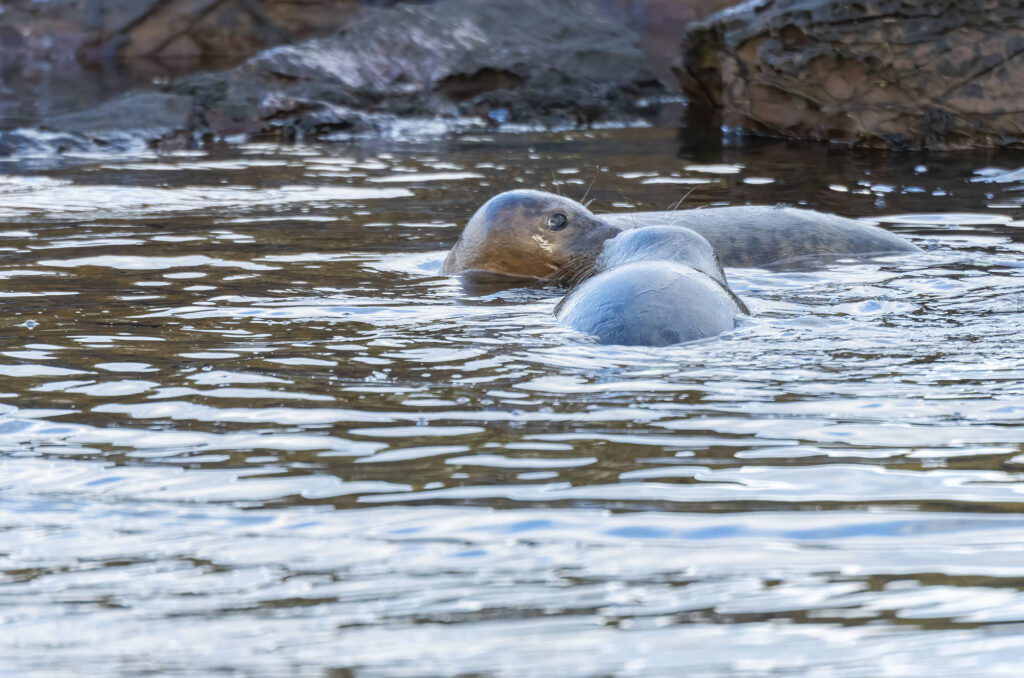
From a wildlife photography point of view, it had also been a picture-perfect afternoon. I recommend keeping an eye on your local wildlife rescue centre for photography opportunities. If they don’t do public releases, they may have open days where you can look behind the scenes and sometimes see the residents during their rehabilitation. Some wildlife shelters also seek volunteer photographers to capture images for calendars, adoption schemes etc. Get signed up for newsletters and follow centres on social media to get the latest news. The chance to photograph wildlife while promoting those who work so hard to protect it is not to be missed.
Here’s hoping for more eclectic encounters in 2024!

